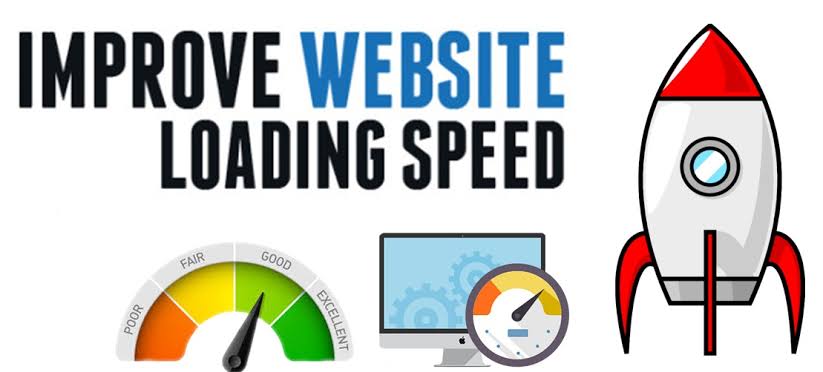Tips to improve website speed
Quickly improve web page speed for free. Tips to increase website speed and website performance and reduce page load time.
Website speed is one of the most critical factors that determine a website’s success. A website that loads quickly can provide a better user experience, higher search engine rankings, and ultimately more conversions. Slow websites can cause frustration for visitors and result in high bounce rates, lost sales, and poor search engine rankings. In this article, we’ll look at some tips to improve website speed.

Optimize images
Images are an essential part of any website, but they can also be a significant contributor to slow load times. Large images can take a long time to load, which can cause slow page speeds. To optimize your images, you can reduce their file size without compromising on quality.
There are many tools available that can help you optimize images, such as Adobe Photoshop, Canva, or online tools like TinyPNG, ImageOptim, or Kraken. You can also use plugins like Smush or ShortPixel if you’re using WordPress.
Minimize HTTP requests
HTTP requests are made every time a web page loads. The more HTTP requests a page has, the slower it will load. You can reduce the number of HTTP requests by minimizing the number of files your web page needs to load. You can achieve this by combining multiple CSS or JavaScript files into one file, or by using CSS sprites to combine multiple images into one.
Use a Content Delivery Network (CDN)
A content delivery network (CDN) can significantly improve website speed. A CDN is a network of servers distributed across the world that delivers content to users based on their geographic location. By using a CDN, you can reduce the distance between your website and your users, which can result in faster load times.
Popular CDNs include Cloudflare, Amazon CloudFront, and Akamai. They offer a range of features, including caching, load balancing, and DDoS protection.
Enable browser caching
Browser caching allows your website to store files locally on a user’s device, which can result in faster load times for returning visitors. By enabling browser caching, you can reduce the number of HTTP requests and improve website speed.
To enable browser caching, you can add caching headers to your server’s responses. You can also use plugins like W3 Total Cache or WP Rocket if you’re using WordPress.
Optimize your code
Poorly optimized code can cause slow load times. To optimize your code, you can remove unnecessary characters, white space, and comments. You can also minify your code, which means removing unnecessary characters and spaces to reduce file size.
Tools like Google PageSpeed Insights or GTmetrix can help you identify areas of your code that need optimization. You can also use plugins like Autoptimize or WP Minify if you’re using WordPress.
Reduce server response time
Server response time is the time it takes for your server to respond to a request from a user’s browser. A slow server response time can cause slow load times. To reduce server response time, you can optimize your server’s configuration and use a high-performance server.
Use a faster web host
Your web host can have a significant impact on your website speed. A slow web host can result in slow load times, while a fast web host can improve website speed. To choose a faster web host, you can compare their speed, uptime, and support. Popular web hosts include Bluehost, SiteGround, and A2 Hosting.
In conclusion, website speed is critical for providing a good user experience and improving search engine rankings. By optimizing images, minimizing HTTP requests, using a CDN, enabling browser caching, optimizing your code, reducing server response time, and using a faster web host, you can significantly improve website speed. Implementing these tips can result in faster load times, improved user engagement, and ultimately more conversions and revenue for your business.
It’s important to note that improving website speed is an ongoing process, and you should regularly monitor your website’s performance to identify areas that need improvement. You can use tools like Google PageSpeed Insights, GTmetrix, or Pingdom to test your website’s speed and identify areas that need optimization.
Another crucial factor to consider is the user experience. A fast-loading website is essential, but it’s not the only factor that determines a good user experience. You should also consider the website’s design, navigation, and content, as these factors can significantly impact user engagement and conversions.
In addition, mobile responsiveness is also critical. With more than half of website traffic coming from mobile devices, having a mobile-friendly website is essential. A mobile-friendly website should load quickly on mobile devices, have a responsive design, and provide a good user experience.
In conclusion, website speed is a critical factor in website performance, user experience, and search engine rankings. By following the tips mentioned above and regularly monitoring your website’s performance, you can significantly improve website speed and provide a better user experience for your visitors. Remember, a fast-loading website can result in higher engagement, conversions, and revenue for your business.